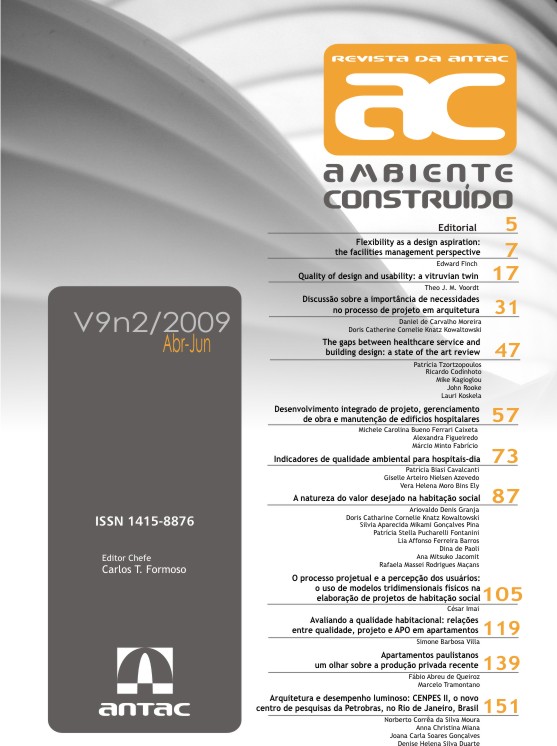Design process and user perception: the use of three-dimensional physical models in the design of social housing projects
Keywords:
Relação ambiente-comportamento. Avaliação pós-ocupação. Avaliação pré-projeto. Projeto de arquitetura. Modelos tridimensionais. Psicologia ambiental.Abstract
This paper examines the existing relationships between designers and future dwellers within a design process in which communication is facilitated using representation systems based on flexible three-dimensional physical models (maquettes) The aim was to allow the user to have a better understanding of the space, and to understand how this representation can aid or hinder a participatory design process. The research method was based on the analysis of the users’ behavior, using video-recording of the design process, as well as on the study of the sketches previously drawn by future users, considering their understanding of the space and their technical mastery when drawing the sketches, and finally on the comparison between the users’ sketches and the actual design. The results indicate that users idealize the housing space, based on their previous knowledge and life experiences relative to housing. The dreams that users seek to fulfill in the buildings seem to be often a consequence of the consumption model sold by the media or the search for climbing to a higher social status, as represented by the housing characteristics.
Downloads
Downloads
Published
How to Cite
Issue
Section
License
Authors who publish in Ambiente Construído agree to the terms:
- The authors grant the Journal the right to publish under the Creative Commons Attribution License (CC BY 4.0), allowing access, printing, reading, distribution, adaptation, and development of other research, if the authorship is recognized.
- Authors are authorized to distribute the work published in the Journal, such as institutional repositories, or to include their article as part of the thesis and/or dissertation, as long as they mention the publication reference in Ambiente Construído.
- Anyone can read, distribute, print, download, and indicate the address of the complete article without prior authorization from the Journal respecting the CC BY 4.0 license.
Creative Commons Attribution License
ISSN 1678-8621




